Picture this: you’re walking through a forest, and suddenly you spot what appears to be a venomous snake coiled on a branch, its head raised in a threatening posture. Your heart races, adrenaline surges, and you quickly step back. But wait — that’s not a snake at all. It’s a caterpillar, no bigger than your thumb, pulling off one of nature’s most incredible magic tricks. This remarkable deception has been fooling predators for millions of years, and it’s so convincing that even humans fall for it.
The Ultimate Shape-Shifter
Some caterpillars have mastered the art of transformation to such a degree that they make professional actors look like amateurs. These remarkable insects don’t just change colors or patterns — they completely alter their body shape and posture to mimic one of nature’s most feared predators. When threatened, certain species can inflate specific body segments, creating the illusion of a snake’s triangular head complete with what appears to be eyes, scales, and even a menacing expression.
The hawkmoth caterpillar family, particularly the elephant hawkmoth larvae, are perhaps the most famous practitioners of this deception. Their transformation is so dramatic that you’d swear you were looking at two completely different creatures.
The Science Behind Snake Mimicry
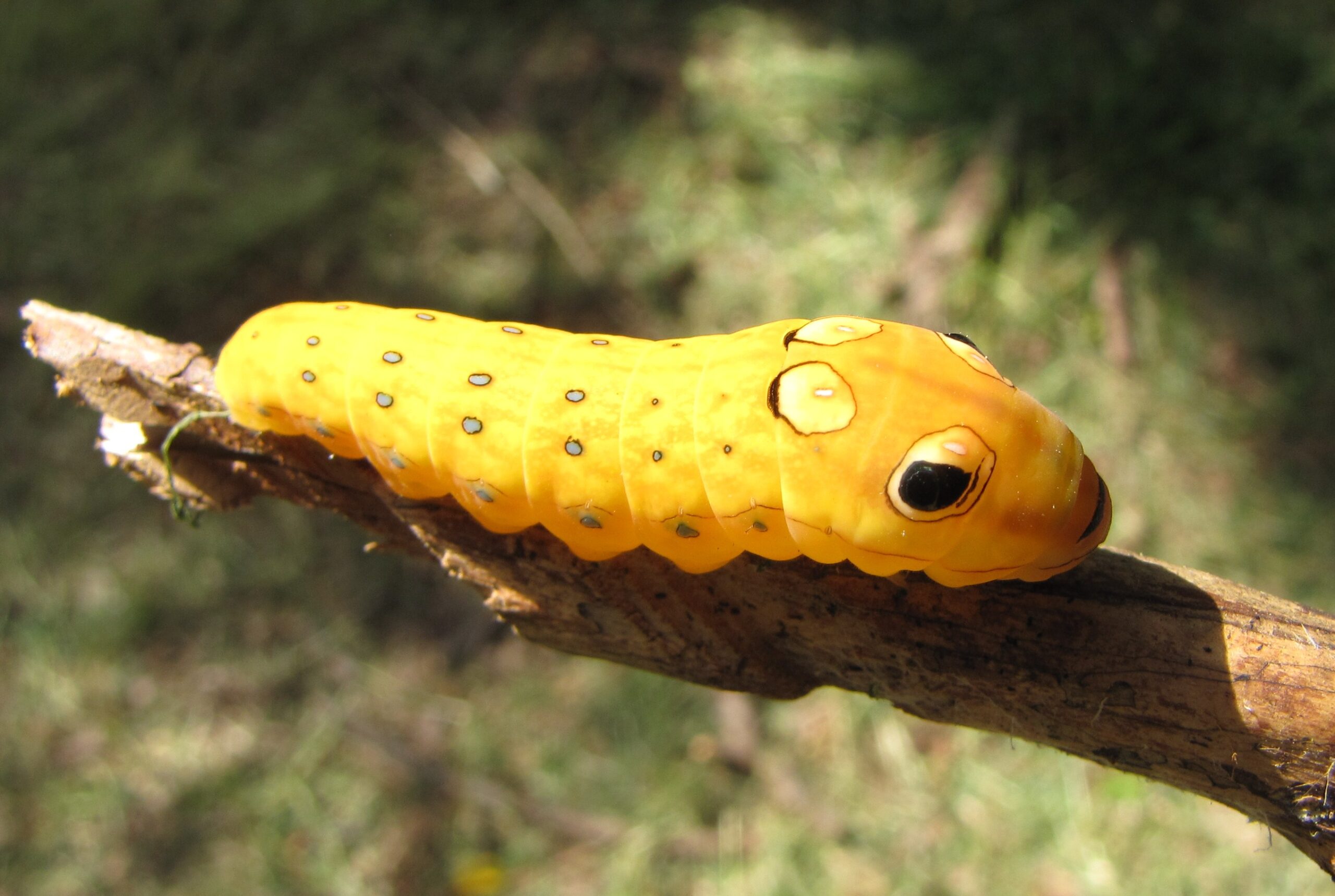
This incredible mimicry isn’t just a happy accident — it’s the result of millions of years of evolutionary pressure. Scientists call this phenomenon “Batesian mimicry,” named after naturalist Henry Walter Bates who first described it in the 1860s. The basic principle is simple: harmless creatures evolve to look like dangerous ones, gaining protection without having to develop actual defenses.
What makes caterpillar snake mimicry so fascinating is how specific and detailed it can be. These larvae don’t just vaguely resemble snakes — they often mimic particular species that are genuinely dangerous in their habitat. The level of detail includes realistic eye spots, color patterns that match local snake species, and even behavioral elements like the way they position their “head” when threatened.
Masters of Disguise: The Elephant Hawkmoth Caterpillar
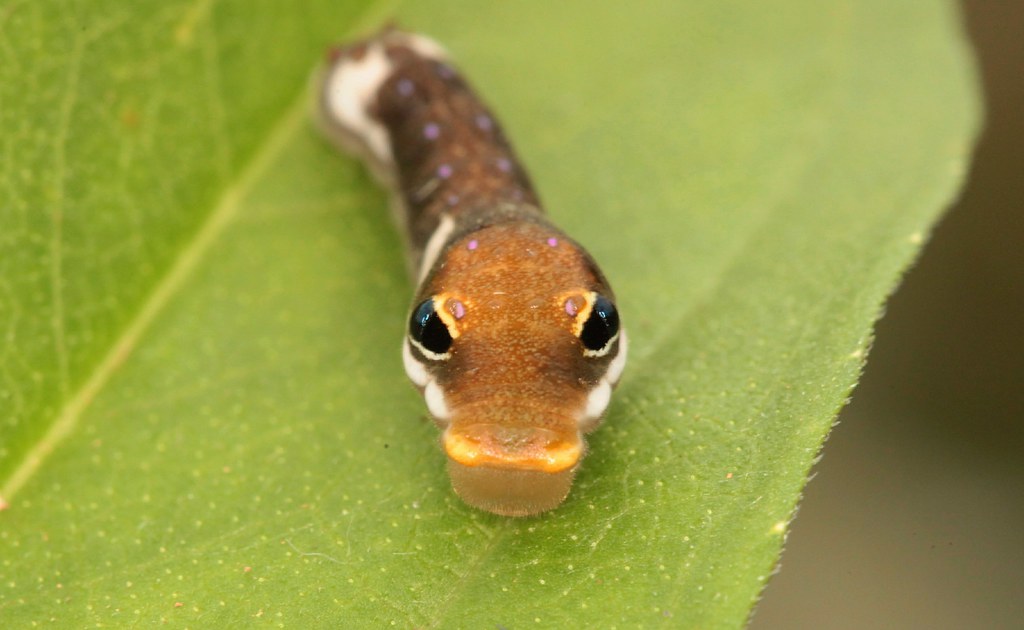
The elephant hawkmoth caterpillar deserves its own spotlight for being perhaps the most convincing snake impersonator in the insect world. When relaxed, this chunky green caterpillar looks harmless enough, munching away on willowherb and bedstraw plants. But the moment danger approaches, it pulls its head back into its thorax and inflates its front segments, creating an incredibly realistic snake head complete with large eye spots.
The transformation is so complete that even experienced naturalists have been momentarily fooled. The “eyes” aren’t just simple spots — they’re complex patterns with highlights and shadows that create a three-dimensional appearance. The caterpillar even sways its fake head in a serpentine manner, completing the illusion with appropriate body language.
The Spicebush Swallowtail’s Double Act
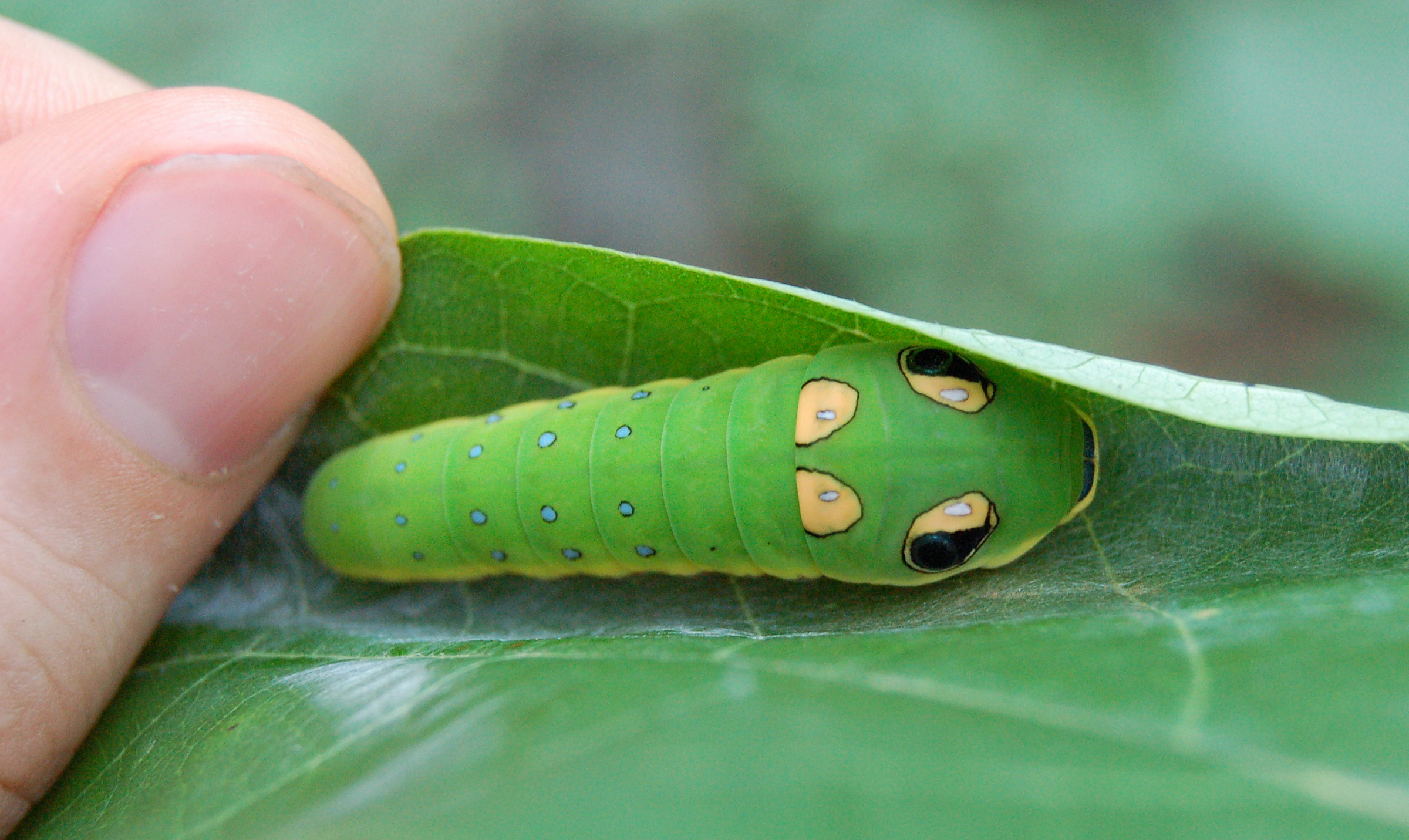
North American forests are home to another master of deception: the spicebush swallowtail caterpillar. This clever larva actually performs two different acts depending on its age. Younger caterpillars mimic bird droppings — not the most glamorous disguise, but highly effective since few predators are interested in eating waste.
As they mature, these caterpillars switch tactics entirely. They develop large eye spots and can inflate their thorax to create a convincing snake head. The eye spots are remarkably detailed, featuring realistic pupils and even reflective highlights that make them appear wet and alive, just like real snake eyes.
Chemical Warfare Meets Visual Deception
Some snake-mimicking caterpillars don’t rely solely on visual tricks — they’ve added chemical warfare to their arsenal. The puss moth caterpillar, found across Europe and Asia, combines its intimidating snake-like appearance with the ability to spray formic acid from glands near its head. This dual defense system makes it one of the most formidable caterpillars in the world.
When threatened, the puss moth caterpillar rears up like a cobra, revealing bright red and black warning colors on its inflated front segments. The eye spots are so realistic that they seem to follow you as the caterpillar moves its head. If the visual display doesn’t work, it follows up with a chemical attack that can cause serious irritation to any would-be predator.
Geographic Variations: Local Snake Species Matter
One of the most fascinating aspects of caterpillar snake mimicry is how it varies geographically. Evolution hasn’t created a one-size-fits-all snake mimic — instead, caterpillars in different regions often resemble the dangerous snakes found in their specific habitats. This local adaptation makes their disguise even more effective against predators who have learned to fear particular snake species.
For example, caterpillars in regions with coral snakes often develop red, black, and yellow banding patterns, while those in areas dominated by vipers might focus on creating realistic heat-sensing pit organ mimics. This regional specificity demonstrates just how finely tuned these evolutionary adaptations have become over millions of years.
The Neurological Impact on Predators
The effectiveness of snake mimicry goes beyond simple visual resemblance — it taps into deep-seated neurological responses that many animals have evolved as survival mechanisms. Birds, mammals, and even some reptiles have innate fear responses to snake-like patterns and movements. This hardwired reaction means that even predators who have never encountered a real snake can still be fooled by a convincing caterpillar mimic.
Research has shown that these fear responses can be triggered within milliseconds of seeing snake-like features. The caterpillar’s mimicry essentially hijacks this ancient warning system, causing predators to flee before they have time to analyze whether the threat is real or fake.
Timing Is Everything: When to Deploy the Defense
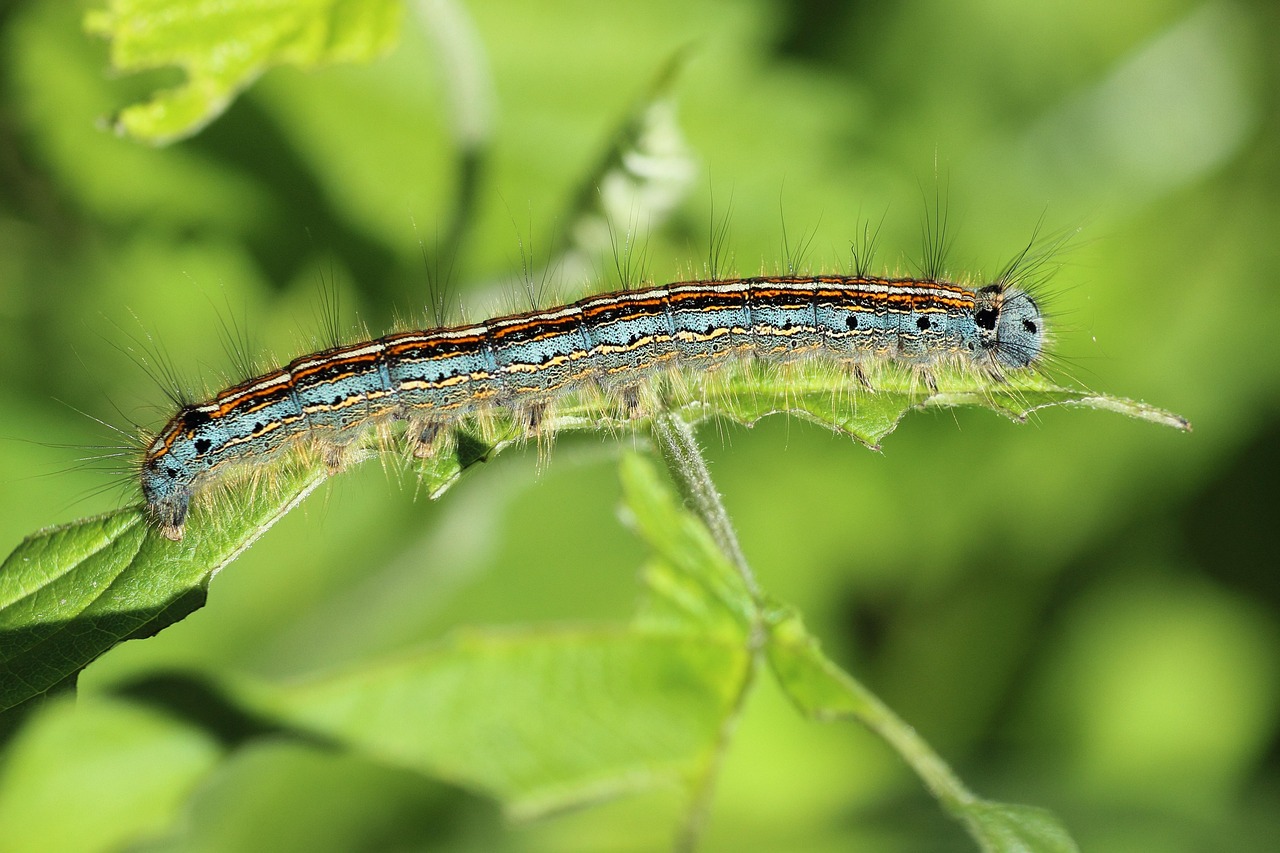
Snake-mimicking caterpillars don’t walk around constantly looking like serpents — that would be exhausting and impractical. Instead, they’ve developed sophisticated trigger systems that activate their disguise only when needed. Vibrations, shadows, sudden movements, or direct contact can all trigger the transformation from harmless caterpillar to terrifying snake mimic.
The speed of this transformation is remarkable. Most species can complete their defensive display within seconds, inflating body segments, revealing eye spots, and adopting threatening postures faster than most predators can react. This rapid response time is crucial for survival, as hesitation in the face of danger often means death in the natural world.
Beyond Snakes: Other Reptilian Mimics
While snake mimicry is the most common and well-documented form of reptilian mimicry among caterpillars, some species have evolved to resemble other reptiles. Certain hawkmoth larvae can create displays that resemble small lizards, complete with what appears to be scales and even leg-like appendages created by specialized body segments.
These alternative forms of reptilian mimicry are less common but equally fascinating. They demonstrate the incredible plasticity of evolutionary adaptation and show how different environmental pressures can lead to diverse survival strategies within closely related species.
The Role of Coloration in the Deception
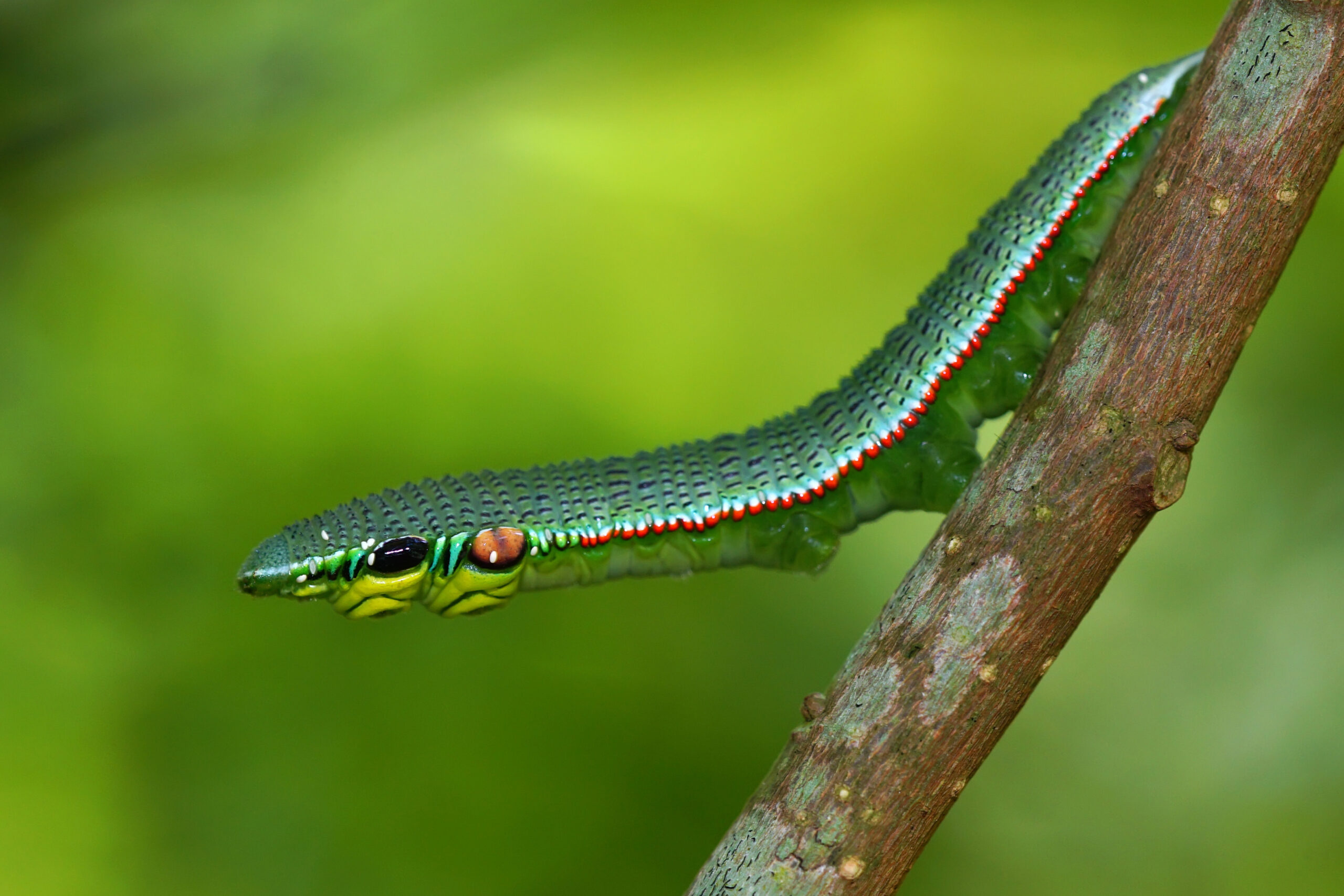
Color plays a crucial role in making caterpillar snake mimicry convincing. Many snake-mimicking caterpillars can rapidly change their coloration when threatened, shifting from camouflaged greens and browns to bright warning colors or realistic snake patterns. This color-changing ability involves specialized cells called chromatophores, similar to those found in chameleons and cuttlefish.
The patterns aren’t random — they often precisely match the coloration of venomous snakes found in the same habitat. Some caterpillars even develop iridescent scales or metallic sheens that perfectly replicate the appearance of certain snake species. This attention to detail in coloration makes their mimicry even more convincing to potential predators.
Behavioral Elements: Moving Like a Snake
Visual appearance alone isn’t enough to create a convincing snake mimic — movement and behavior are equally important. Snake-mimicking caterpillars have evolved specific behavioral patterns that enhance their disguise. They sway their fake heads in serpentine motions, contract and expand their body segments rhythmically, and even produce hissing sounds by forcing air through their spiracles.
Some species have learned to strike at threats with lightning speed, mimicking the aggressive defensive behavior of venomous snakes. This combination of visual and behavioral mimicry creates such a convincing performance that even trained herpetologists have been momentarily deceived.
Evolutionary Arms Race: Predators Fighting Back
The success of caterpillar snake mimicry has led to an ongoing evolutionary arms race between mimics and their predators. Some bird species have begun to develop better discrimination abilities, learning to tell the difference between real snakes and caterpillar imposters. This has forced caterpillars to continually refine their disguises, leading to increasingly sophisticated mimicry.
The result is a constant cycle of adaptation and counter-adaptation that pushes both predators and prey to develop ever more advanced survival strategies. This evolutionary pressure has produced some of the most convincing animal mimicry found anywhere in nature.
Conservation Implications
Understanding caterpillar snake mimicry has important implications for conservation efforts. Many of these remarkable species are facing pressure from habitat loss, climate change, and pesticide use. The complex ecological relationships that maintain effective mimicry can be disrupted by environmental changes, potentially rendering millions of years of evolutionary adaptation useless.
Conservation programs now recognize the importance of preserving not just individual species, but the entire ecological networks that support complex behaviors like mimicry. Protecting habitats that contain both the mimics and the species they impersonate is crucial for maintaining these extraordinary evolutionary relationships.
The Future of Mimicry Research
Modern technology is opening new windows into understanding how caterpillar snake mimicry works. High-speed cameras reveal the mechanics of rapid transformation, while genetic studies are beginning to uncover the molecular basis for these remarkable adaptations. Researchers are also using virtual reality and computer modeling to better understand how predators perceive and respond to mimetic displays.
This research isn’t just academically interesting — it has practical applications in fields ranging from robotics to materials science. Engineers are studying caterpillar transformation mechanisms to develop new types of adaptive camouflage and shape-changing materials. The natural world continues to inspire human innovation in unexpected ways.
The next time you’re walking through a forest and spot what looks like a small snake, take a closer look — you might be witnessing one of evolution’s greatest magic tricks in action. These remarkable caterpillars prove that in nature’s theater, the best actors aren’t always the ones you’d expect. What other incredible deceptions might be hiding in plain sight around us?
